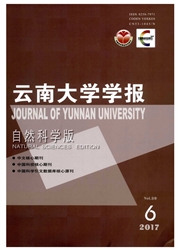

 中文摘要:
中文摘要:
依据速率-状态依赖性摩擦本构关系,并结合中下地壳和上地幔的黏弹性松弛效应,以震后库仑破裂应力变化和同震动态库仑破裂应力变化的计算为基础,模拟了两种应力变化对芦山地震断层的失稳发震时间的影响,研究了2008年Ms8.0汶川地震与2013年Ms7.0芦山地震之间的触发关系.计算得到,汶川地震在芦山地震震源断层面上产生的动态应力变化的峰值为0.127 MPa;此外,经过近5年中下地壳和上地幔的黏弹性松弛效应,芦山地震震源断层面上受到的震后应力变化值为0.025 MPa.结果表明,芦山地震的震源断层在应力积累逐渐接近临界状态的某一特定时期内,受到了汶川地震产生的动态应力变化、静态应力变化以及黏弹性松弛效应造成应力变化的共同触发作用,且动态应力的延迟触发作用可能更为显著.最后对芦山地震之后研究区域的应力变化场进行了初步探讨.
 英文摘要:
英文摘要:
Based on the calculations of both the post-seismic Coulomb failure stress change and coseismic dynamic Coulomb failure stress change,we simulate the effects on the time of the nucleation and failure of the Lushan earthquake fault due to these two kinds of stress changes,by using the rate- and state-dependent friction law and viscoelastic relaxation in the middle-lower crust and upper mantle.Furthermore,the triggering relationship between the Wenchuan earthquake and Lushan earthquake is studied.The results show that the peak value of dynamic stress change on the Lushan earthquake fault induced by Wenchuan earthquake is 0.127 MPa.With the 5-year accumulation of the viscoelastic relaxation in the middle-lower crust and upper mantle,the post-seismic stress change on the Lushan earthquake fault is 0.025 MPa.The results indicate that the process of the nucleation and failure for the Lushan earthquake fault is affected by the post-seismic Coulomb failure stress change,dynamic stress change and static stress change induced by the Wenchuan earthquake,and the effect of dynamic stress change is more obvious than the others.Finally,we investigate the field of stress changes in the studied area after the Lushan earthquake.
 同期刊论文项目
同期刊论文项目
 同项目期刊论文
同项目期刊论文
 期刊信息
期刊信息
